Spatial
Vincent Xiao Haven for Māngere Youth
-
Kaiako / Lecturer
Lama Tone
-
School
University of Auckland
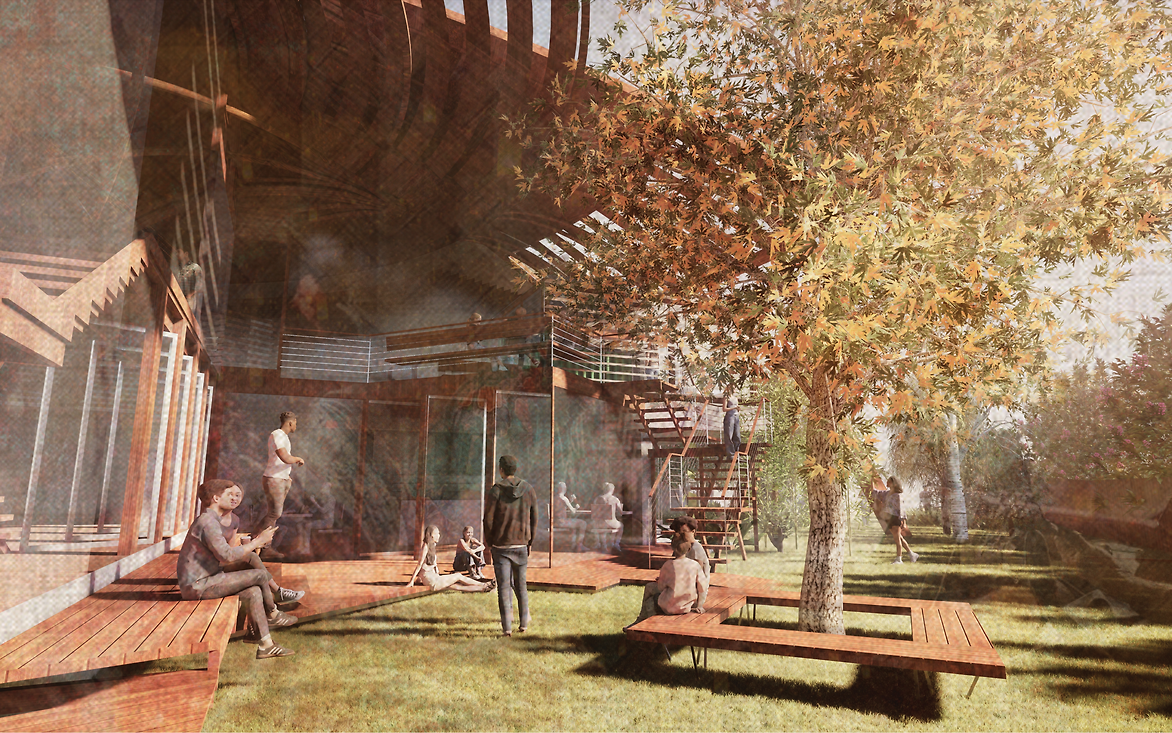
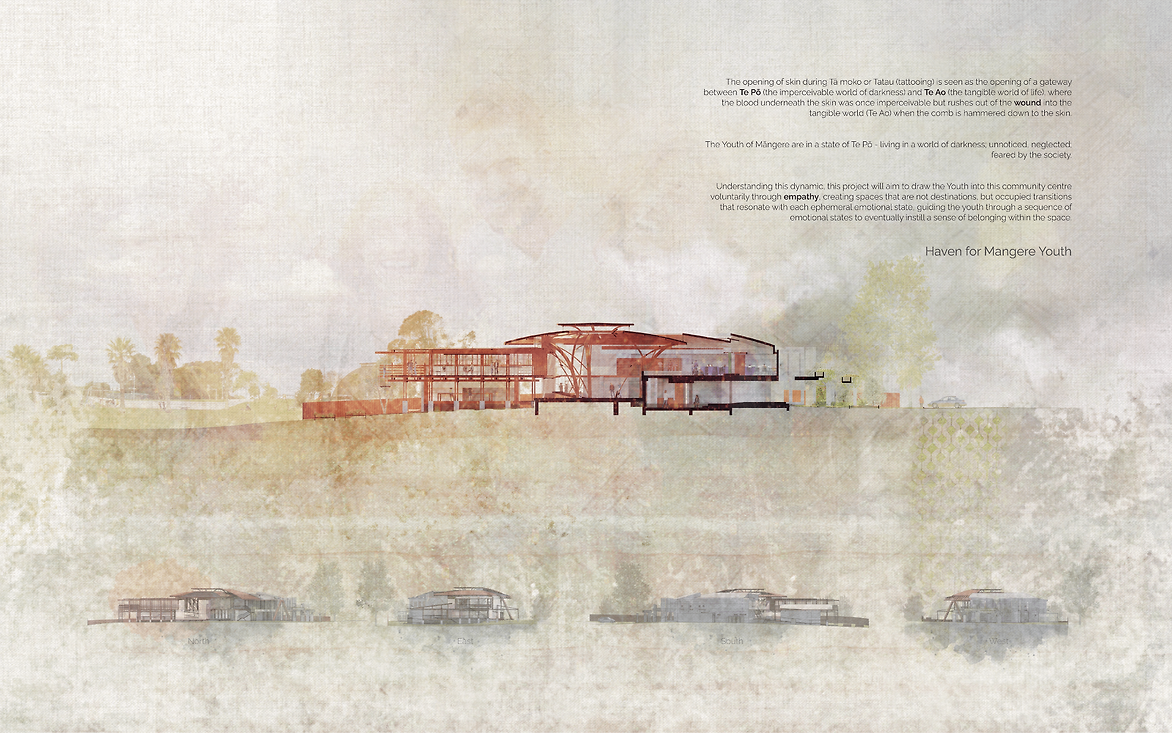
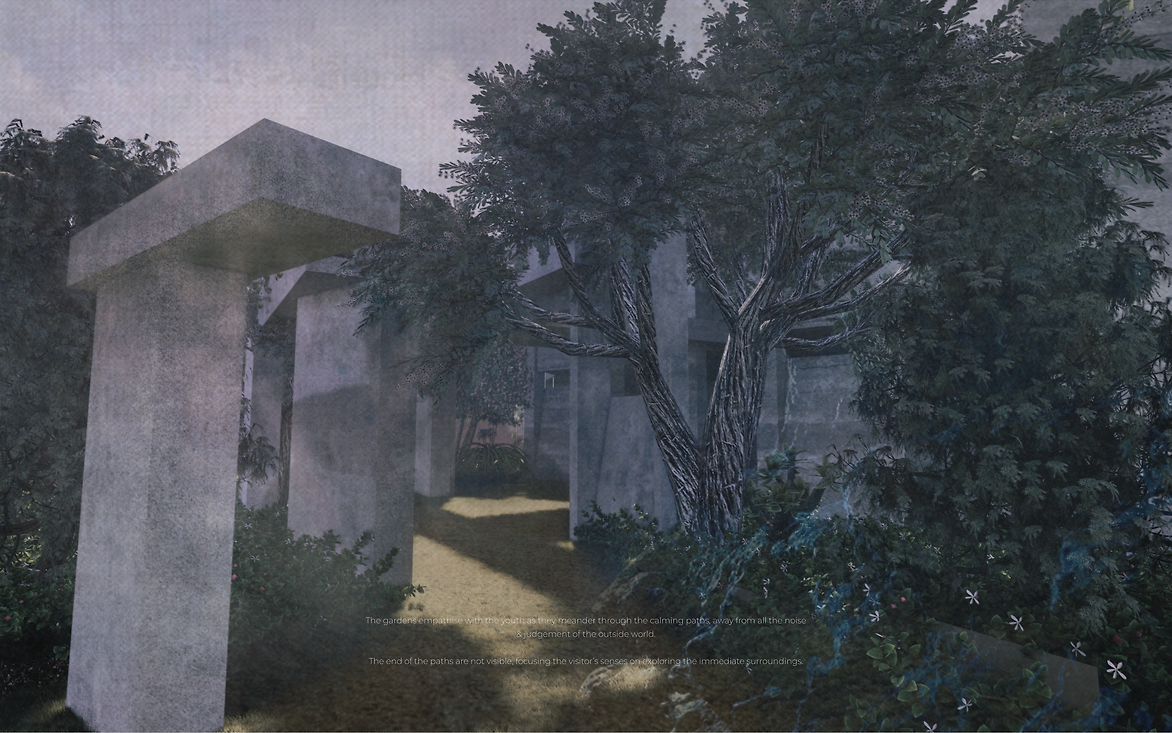
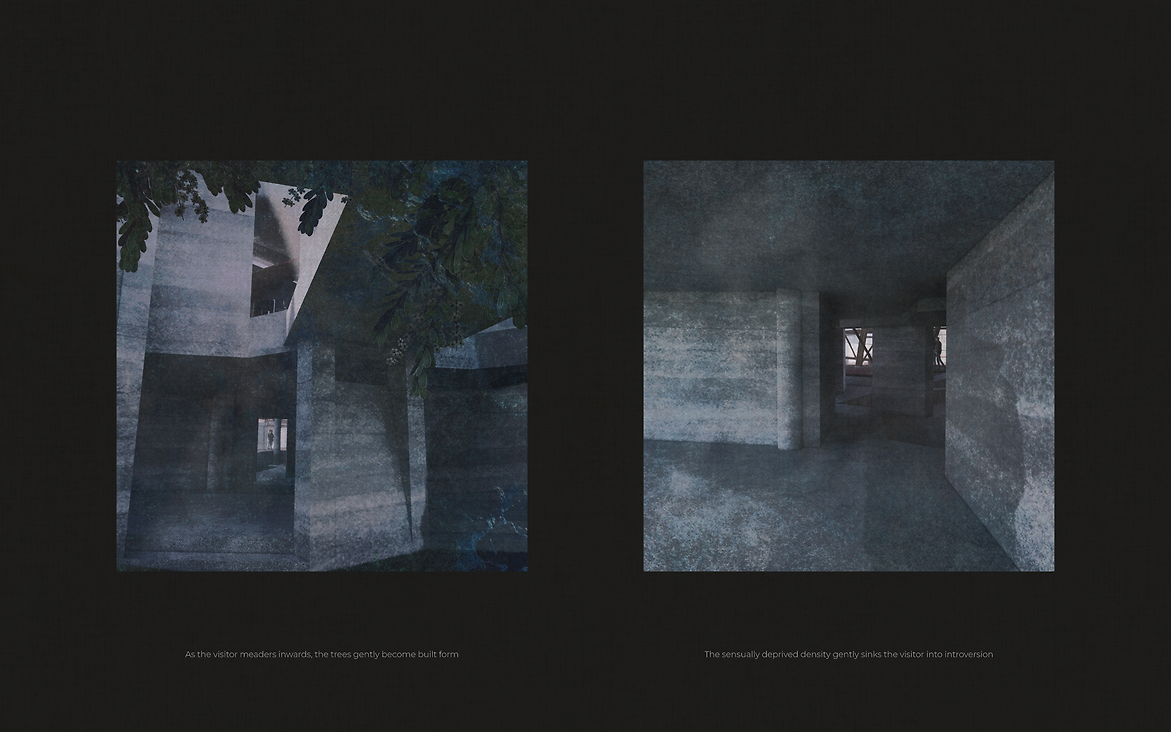
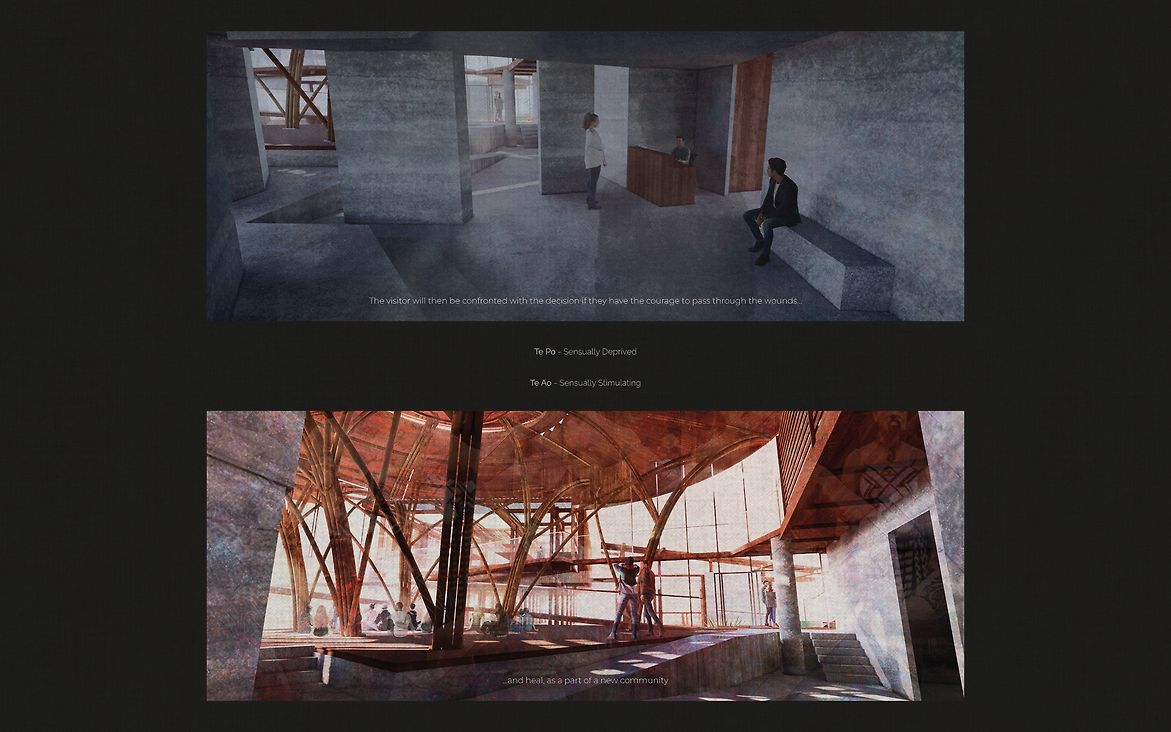
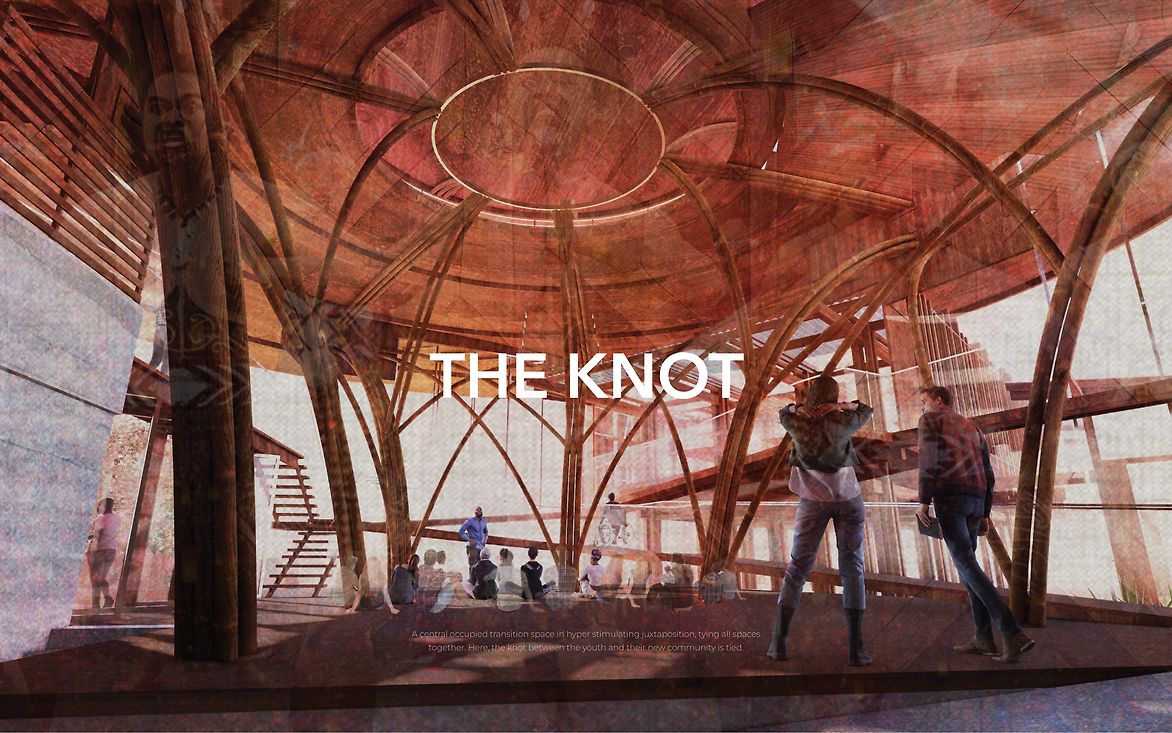
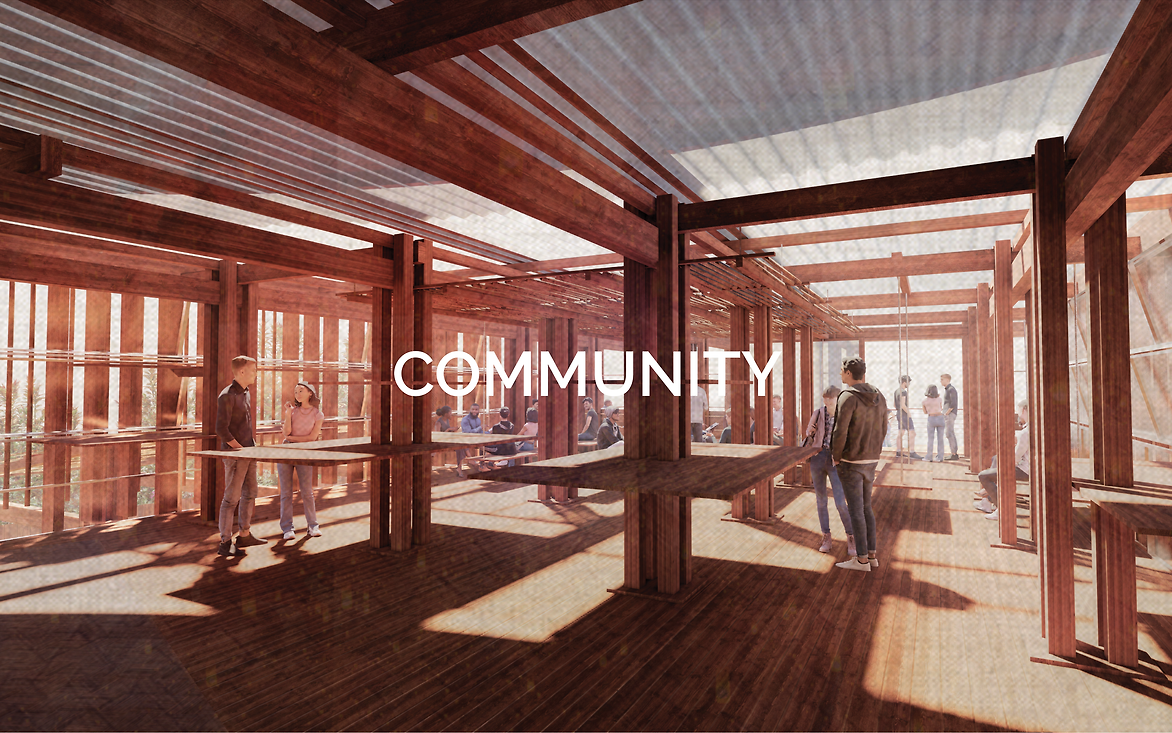
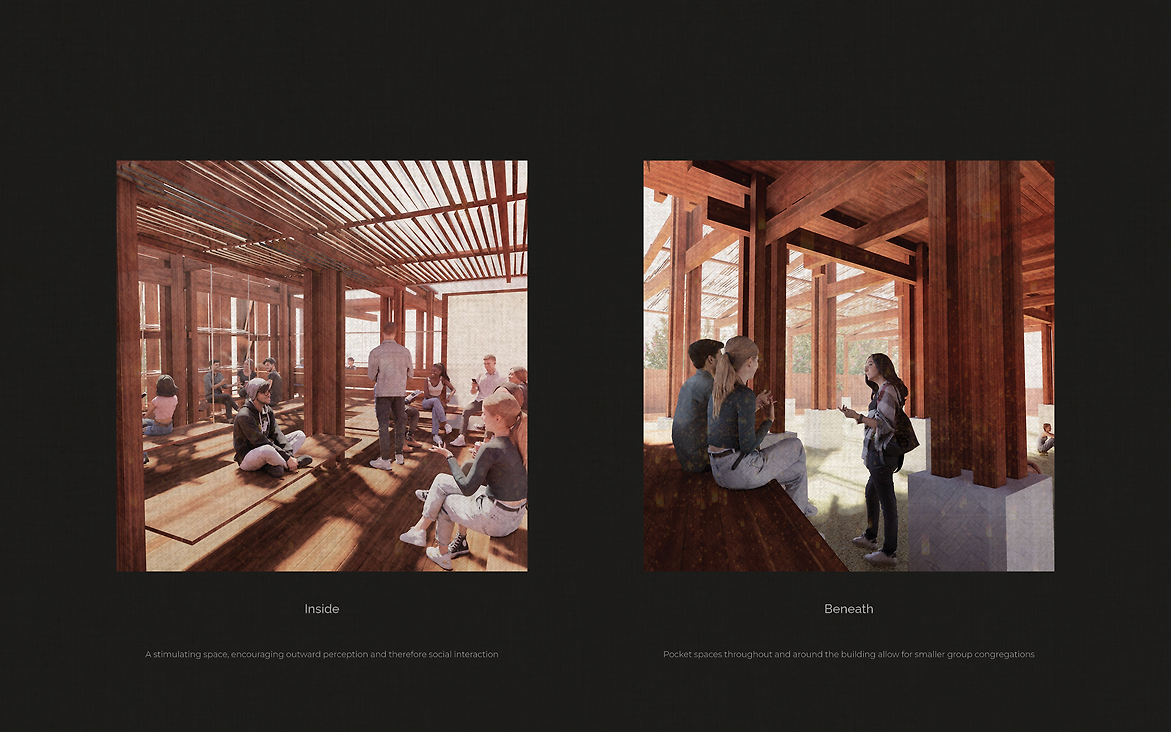
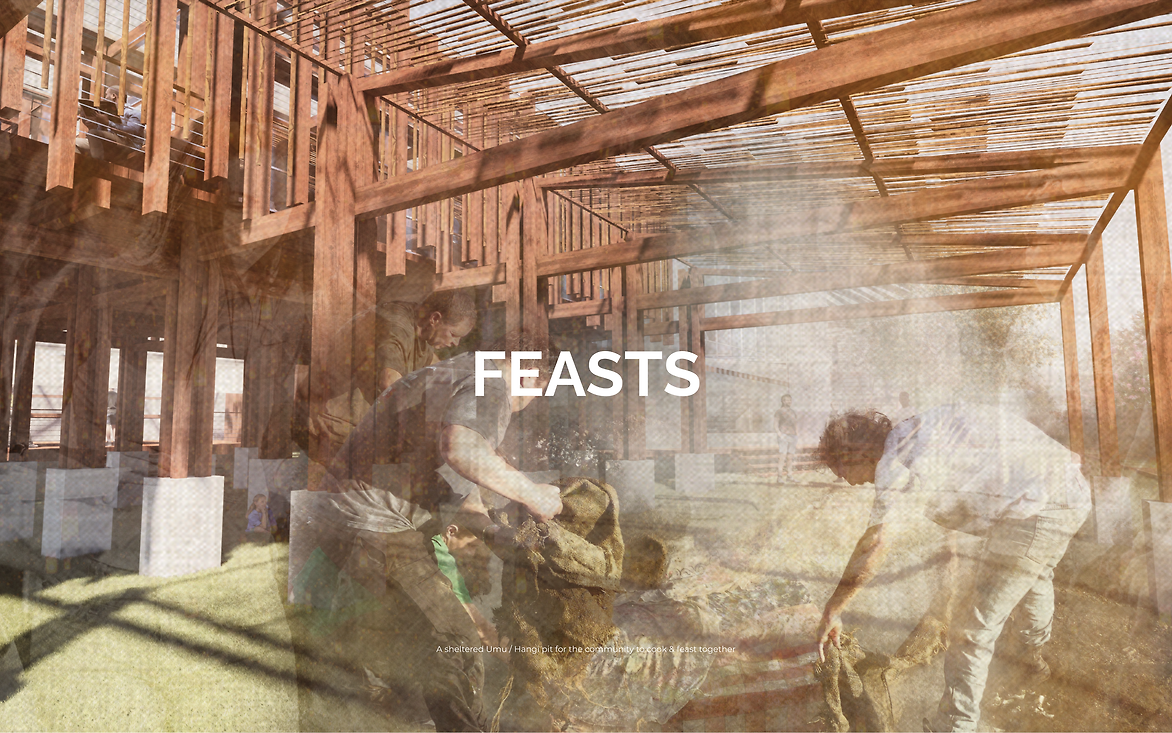
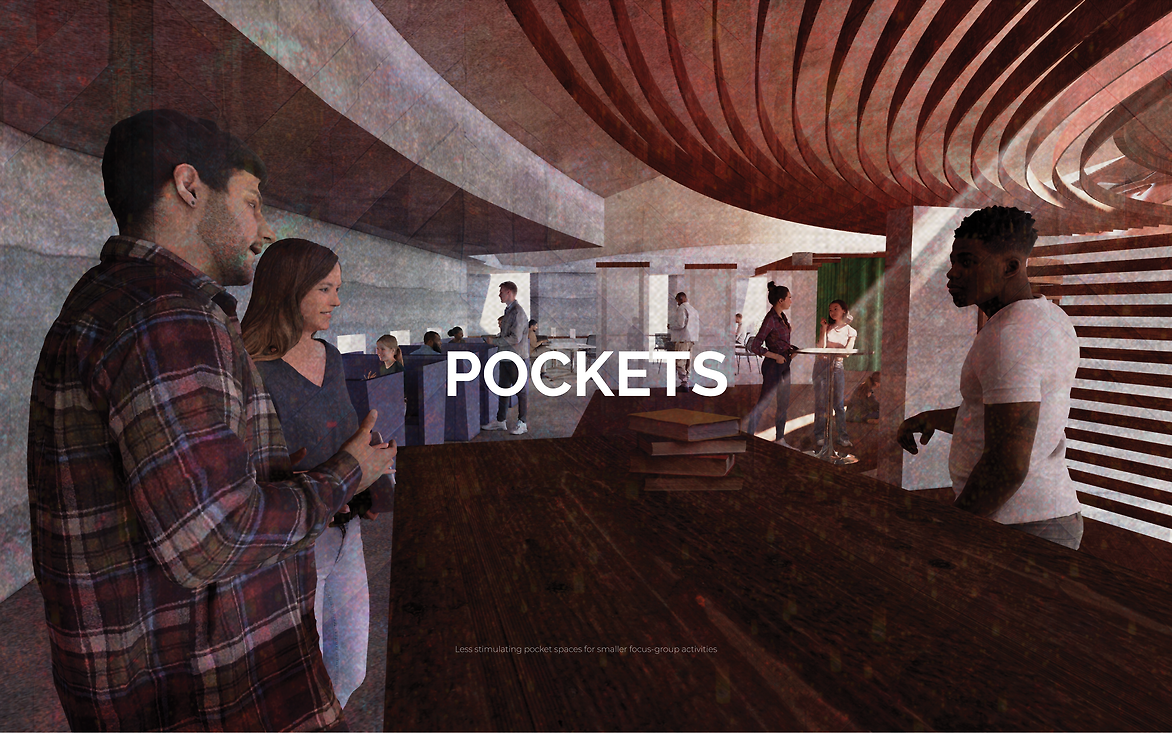
Description:
Standing across the street, onlookers would be surprised to be told that this project is a youth centre. Presented with a conceptual brief to design a centre for Mangere youth - a demographic whose conditions have continued to worsen, feeling increasingly disconnected from society, and turning to delinquency. This unconventional project seeks to understand the needs of the youth, aiming to re-invent the typology of the youth centre with the end goal of instilling a sense of community amongst the youth, and gradually reintegrating them with the greater society.
Speakers from around Aotearoa and specifically South Auckland, whether youth workers or just members of the community have all noted one thing in common - that a place for healing for Polynesian men and youth does not have to be a place that sparks joy with the goal to cheer them up. More often than not, they heal when they are able to share their stories with people who have similar wounds so they feel heard and truly empathised with. This makes one feel like they are part of a community that they belong in.
They want not a place that makes them happier
They want a space to wallow in pain together
Then from that, maybe they’ll get better
If we empathise with those who need help, they do not want to be forcefully pulled into such facilities as they often do not wish to face that they may need help. Rather, they must feel comfortable to wander and meader… eventually exploring deeper into the rabbit hole when they find resonance with a space. This, like principles of persuasion, is most effective due to the feeling that they are not being manipulated into anything, but are rather discovering something for themselves that they resonate with.
To achieve this comfort, they must feel safe in the space, shielded from judgemental gazes. The space must also gently empathise with the inner darkness they feel, being cool, quiet, and increasingly sensually deprived as they wander deeper and deeper inwards, becoming one with the darkness that envelopes them, as they are submerged into the dark, compressed space of Te Po - the unstimulating, imperceivable world of Darkness.
The Polynesian concept of Te Po and Te Ao - The stimulating, tangible word of Light - is expressed in this project with architectural devices of stimulation such as rhythm, light, and compression - the nuanced control of which creates unique characteristics of each space, determining its resonance to people of different current emotional states, and the resulting sensations its inhabitants experience.
In a sense, Architecture is a vessel of perception manipulation, affecting how people feel, think, act, and experience subsequent spaces. This control of stimulation and resonance would, like with empathic persuasion, be able to draw visitors deep within the Youth Center, guiding them along a sequence of emotions with the goal of instilling a sense of community.
This exploration presents a solution that is targeted at healing the wounds of the troubled youth of Mangere, but the theoretical thinking driving the project is not limited to them. While empathy is expressed differently in various cultures, and there is much nuance & taboo to consider, taking a bold unconventional step can sometimes be the innovation that begins the healing of a community.
Judge's comments:
This innovative design dared to redefine the conventional concept of a youth center, harnessing empathetic design principles to create an unconventional, deeply resonating, and safe haven that honours the emotional complexities of its users and fosters a sense of community and healing.